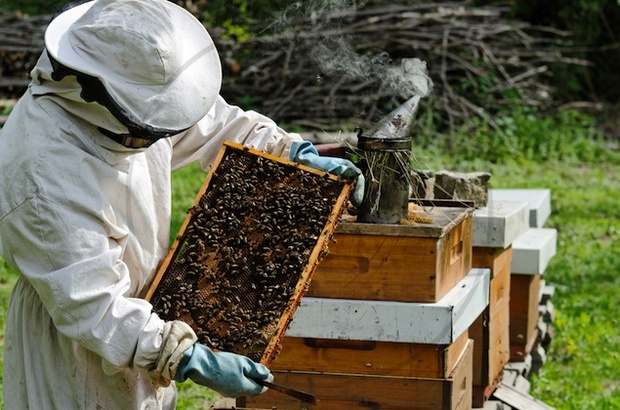Topics
Food: Where Does It Come From?
- Food Variety
- Ingredients of Food
- Plant Sources
- Plant as Food (Plant Product)
- Animal Sources
- Animal Products used as Food
- Classification of Animal
- Food and Its Types
Science
Components of Food
- Food and Its Types
- What Do Different Food Items Contain?
- Test for Carbohydrates/Starch
- Test for Protein
- Test for Fats
- Nutrients and Nutrition
- Component of Food
- Carbohydrates
- Fats (Lipids)
- Proteins
- Vitamin and Minerals
- Component of Food: Minerals
- A Balanced Diet
- Obesity and Its Prevention
- Deficiency Diseases
- Diseases Due to Deficiency of Vitamin
- Diseases Due to Deficiency of Minerals
Sorting Materials into Groups
Fibre to Fabric
- Fabrics
- Fibre
- Plant Fibres: Cotton
- Plant Fibre: Jute Fibre
- Fibre to Yarn to Fabric
- History of Clothing Material
Separation of Substances
- Mixture
- Types of Mixtures
- Separation of Mixtures
- Methods of Separation
- Handpicking Method
- Threshing Method
- Winnowing Method
- Sieving Method
- Sedimentation Method
- Decantation Method
- Filtration Method
- Evaporation Method
- Simple Distillation Method
- Solution
- Water - a Universal Solvent
- Components of Solutions
- Different Types of Solutions
- Saturated Solutions
Getting to Know Plants
- Plant Forms and Functions
- Classification of Plants
- Stem
- The Structure of a Plant
- Photosynthesis: Food-Making Process in Plants
- Process of Photosynthesis
- Transpiration
- Root
- Types of Root
- Flower
- Structure of a Bisexual Flower
Body Movements
- Human Body and Its Movements
- Joints and Its Classification
- Human Skeleton System
- The Human Skeleton: Appendicular Skeleton
- The Human Skeleton: Axial Skeleton
- Bone and Its Types
- Muscles and Its Types
- Muscular System
- Movement in Different Animals
Changes Around Us
- Changes-Physical and Chemical
- Classification of Change: Reversible and Irreversible Changes
- Classification of Change: Desirable and Undesirable Changes
- Classification of Change: Natural and Man-made Changes
- Classification of Change: Periodic and Non-periodic Changes
- Classification of Change: Slow and Fast Changes
- Classification of Change: Physical Changes
- Chemical Reaction
- Effect of Heat on Solid, Liquid and Gases
The Living Organisms - Characteristics and Habitats
- Biodiversity
- Habitat
- Adaptations and Its Types
- Structure and Function of an Ecosystem
- Adaptations of Plants
- Adaptation in Desert Plants (Xerophytes)
- Adaptation in plants of snowy regions
- Adaptation in Grassland Plants (Mesophytes)
- Adaptation in Aquatic Plants (Hydrophytes)
- Adaptation in Animals
- Adaptation in Desert Animals
- Adaptation in Mountain Animal
- Adaptation in Forest and Grassland Animals
- Adaptation in Aquatic Animals
- Characteristics of Organisms
Motion and Measurement of Distances
- Story of Transport
- Measurements
- Unit and Its Types
- Unit Systems
- International System of Units (Si System)
- Devices for Measuring Length
- Measuring the Length of a Curved Line
- Motion and Rest
- Types of Motion
- Multiple Motion
Light, Shadows and Reflections
Electricity and Circuits
- Electricity
- Electric cell
- A Bulb Connected to an Electric Cell
- Electric Circuit
- Electric Switch
- Conductors and Insulators
Fun with Magnets
- Magnet
- Uses of Magnets
- Discovery of Magnets
- Classification of Magnets
- Magnetic and Non-magnetic Materials
- Magnetic Pole
- Finding Directions with a Magnet
- Making a Magnet
- Magnetic Properties
- Demagnetization of a Magnet
Air Around Us
- Air Around Us
- Composition and Components of Air
- Importance of Air
- How is the Oxygen in the Atmosphere Replaced?
Water
Garbage In, Garbage Out
- Waste and Its Categories
- Disposal of Waste Water
- Solid Waste Management
- Vermicomposting
- Waste Separation Exercise
- Recycling of Paper
- Man-made Fibre: Plastics
- Harmful Effects of Plastics
- Recycling of Plastic
Notes
Beekeeping:

Bee farming is performed in bee farms or apiaries. Many farmers perform beekeeping as a means of generating additional income because:
Honey is a widely used product
Bee farming is not very expensive
They also generate wax along with honey
Bees used for commercial and honey production
Apis Cerana Indica - Indian bee
A. Dorsata - The rock bee
A. Florae - The little bee
A. Mellifera – Italian variety of bee
Castes in Honey Bee
The honey bees build a nest which is called as a bee-hive. A hive contains almost 10,000 to 60,000 bees. The bees live together in a colony and divide themselves into 3 different castes.
Queen bee: the fertile, functional female of all is the queen bee. It is the supreme bee in the colony.
Drone bees: they are the smaller male bees of the colony. Their main task is to maintain the hive.
Worker bees: they are the smallest in size but the most active members of the hive. They perform different functions such as collecting pollens and nectar, constructing the comb, cleaning the cells of the hive.
Why Italian bees are popular in bee farming?
They produce large amounts of honey.
They do not sting much.
The breeding period in Italian bees is long.
Factors that determine the quality of honey
Along with the choice of selection of the bee species, the flowers decide the quality quantity and taste of the honey produced.
There should also be enough pasturage or availability of flowers to the bees so that they can collect enough nectar and pollen.
